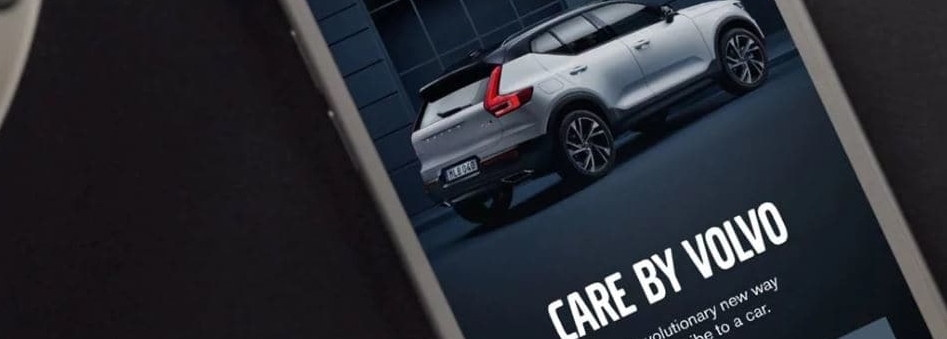171. Ben Ford on Situational Awareness and Managing for Constant Change
How do businesses actually manage — rather than plan for — continuous change?
The increasing adoption of systems thinking in business tells us that the world is changing very fast, and companies need to change at least as fast as their environment in order to thrive. It’s comfortable to talk about but hard and uncomfortable to do. Most people prefer to continue to do what they’re used to rather than embrace change and constant experimentation.
There’s a lot to be learned from the military where special forces are trained to specialize in rapid reaction in chaotic or VUCA (volatile, uncertain, complex and ambiguous) worlds. They face an ever-changing environment (often described as kinetic). They have a very pure evolutionary process: what wins, survives. While the military organization is hierarchical, military operations are flat so that tactical decisions can be made by the people on the ground.
While we are anti-war, we can nevertheless recognize that the military has experience and expertise in managing and organizing for continuous change. We can learn from it.
There are significant barriers to overcome to implement rapid change management in business.
Certainly, the time scales are different. Companies change at an intergenerational pace, one generation of managers (or managerial techniques) learning from the last one. In hierarchical organizations, people reach managerial and executive positions by accumulating experience. By the time they get to their high position in the hierarchy, they have locked in an old mental model. They miss the signals of change and fall back on preconceived ideas and notions and methods.
In addition, there is considerable inertia to overcome — a resistance to change that acts as a blocker to agility. It’s human nature to resist change. Once a company has established a niche or a market share, it’s genuinely hard to abandon the strategy or the tooling or the products and services and the marketing that got them there.
To put it in military terms, change is a constant battle.
Situational awareness is a set of tools that are transferable from military to business to improve management of change.
Situational awareness governs how well your understanding of the world maps to reality. It operates along two perspectives and 3 time frames.
Internal situational awareness concerns the orientation of your firm, resources, capacity, the capabilities of your team, morale and so on. External situational awareness concerns markets, competitors, customers, trends, technologies, and all the environmental factors that are subject to change.
The three timeframes in military terminology are tactical, operational, and strategic.
The tactical timeframe concerns people on the ground in contact with the environment. In business, this can be the sales team or customer service or engineers in direct contact with customers. They’re doing implementation work but they are also the sensing mechanism. They may have daily or even hourly cycles for intention to change, making the change, learning from the consequences of the change and moving forward to the next change. They must be empowered, trained and equipped, and confident about their freedom of action and adaptation.
The strategic timeframe is the macroeconomic scale of what the firm is trying to achieve for the customer. This frame may be months or years, and dictates how to organize, how to invest, and where to allocate resources.
The operational timeframe is between the other two. How does the firm integrate short term implementational excellence with long term strategic engagement with a changing environment? How does the firm integrate all the hourly and daily information coming from the front line with the long-term investments and resource allocation projects? In a software business for example, there may be a trade-off between building new tooling, which takes time, and rapidly delivering products from established tooling.
How to apply situational awareness.
Actively use the 6-box framework (internal /external perspectives, tactical/ operational/ strategic timeframes.
To achieve better alignment of internal / external timeframes, look for mismatches across boundaries in the firm. Do the people working on the front line have the same understanding of the importance of the work as the managers and executives. Does getting thing done seem more difficult than it should be? Are the feedback loops fast? Is the information in the feedback loops spread throughout the firm, through multiple teams, divisions and silos? What’s the gap between perceived ideals and actual experience?
To implement across three time frames is an exercise in portfolio balancing and active discovery, with a high premium on sensing skills.
How much time and resource effort should a firm spend on refining its tooling (the operational timeframe) so that every produced end-product is exactly the same (the tactical timeframe) while keeping an eye out for environmental change, when a future competitor might introduce a faster cheaper product (the strategic timeframe)?
As Austrian economics always stresses, there’s no objective answer, just subjective learning from experience. For example, Netflix was part of the strategic timeframe that Blockbuster failed to manage. Blockbuster was operating its stores in a proven fashion (tactical) and adding new stores (operational), while rejecting the implications of the Netflix model. Today (May 2021), Netflix shows signs of missing some strategic signals. They made content their focus (tactical) and built original production capability (operational) but may be finding that customer tastes are changing and the appeal of their produced content is in decline (strategic).
Similarly, for the last few years, funding has been easy for startups (tactical) and so they have focused on long term market development (strategic) without hitting profit and cash flow milestones (operational). Now that funding is drying up, they are having to shore up their operational capabilities.
There are a couple of techniques that are helpful. One is Horizon Scanning: allocating some resources to identifying and picking out future external scenarios that represent potential change or strategic threats and building a response in advance. Another is red team thinking: mapping out future internal failure modes and then working backwards from them to identify the trip wires to look out for, and to nip emerging issues in the bud.
The after-action review (AAR) is an important element of situational awareness.
The AAR is applied not just in the military but in fast change business environments such as agile software development. It’s a tool to separate the quality of the decision you made from the outcome of the action that you took. We tend to get attached to our decisions, even if they were based on poor principles.
The components of an AAR include:
- What was expected to happen?
- What actually happened?
- What went well and why?
- What can be improved and how?
The discussion must be open and honest without hierarchy or blame. As far as possible, everyone on the team should participate so that all perspectives can be included. The focus is on results and identification of ways to sustain what was done well as well as the development of recommendations on ways to overcome obstacles. It’s really important to identify with high fidelity what happened because only then is there a good chance to identify new opportunities or trends with equal fidelity. In situations of uncertainty, it’s important to identify “what happened” accurately, in order to be able to identify what it means and what it implies for future actions.
AAR becomes part of disciplined execution.
The Economics For Business community is familiar with the explore/expand method of managing business complexity: explore many options through experimentation and expand (by allocating more resources) those that show good results. Annika Steiber in episode 170 called this capability “ambidexterity” — combining two logics of business in consistent and reliable execution on one hand and openness to change and exploration on the other.
Ben expands this thinking into the concept of disciplined execution. Once a process is proven and is producing reliable results, map it out carefully and then take individual steps or parts of the process and see if they can be further improved, e.g., by automation, without changing the outputs. Processes thus become more resource efficient in producing their output. Always be trying to improve what you already do well.
Similarly, once an “explore” project starts to become productive, apply the same continuous improvement standard. Map the process, examine parts that can be improved, and do so part by part so production is maintained and efficiency is increased.
All of this change dynamic should be driven from the bottom up.
Process improvements, fast responses to feedback loops, experimentation and rapid change are all insurgencies — the established hierarchy and mental models will often find them hard to embrace. Insurgency is a bottom-up dynamic. When transformation is pushed from the top down, it often happens that the territory changes before the consultants have drawn the new map. The hierarchy’s role is to provide strong alignment with the orientation of the firm and its culture and vision-mission, alongside loose control of front-line action.
Additional Resources
“Apply Situational Awareness To Manage Change” (PDF): Download PDF
Ben Ford’s website, where you’ll find his Mission Control services: MissionCtrl.dev
Ben Ford’s LinkedIn page, with a lot of presentations and recordings to learn from: Visit LinkedIn








Leave a Reply
Want to join the discussion?Feel free to contribute!